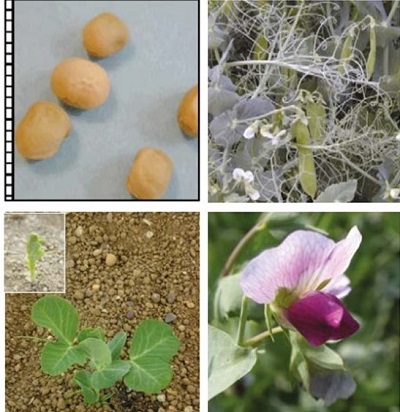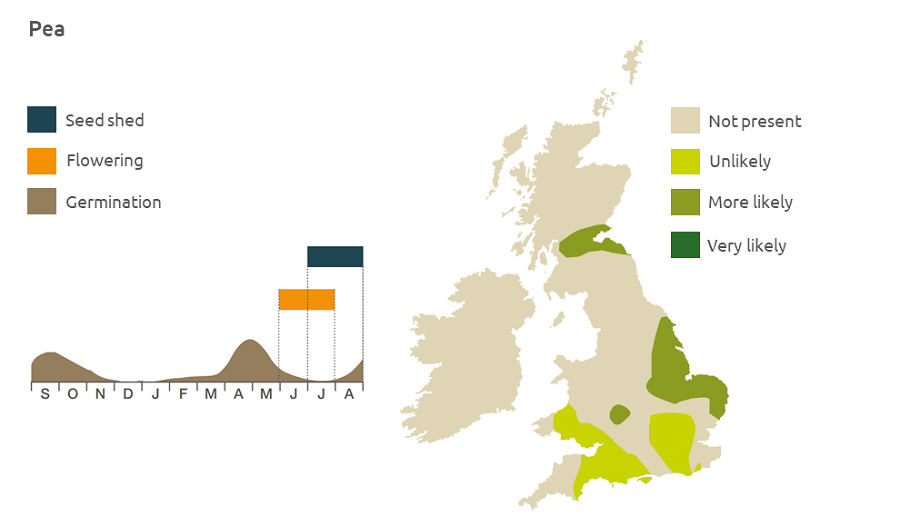- Home
- Knowledge library
- Distribution and biology of pea volunteer weeds in the UK
Distribution and biology of pea volunteer weeds in the UK
Pea can be a volunteer weed in arable areas near to previous crops. Find out how to identify and control it.
Pea and bean crop walker guide
Overview
There are a large number of cultivated strains of pea (Pisum sativum), grown for food and animal fodder. Although plants can germinate in autumn and occasionally withstand heavy frost, they usually germinate in spring. They prefer cool moist growing conditions and are shallow-rooted and therefore susceptible to drought. Seeds can germinate at temperatures above 4.5°C. Although peas emerge and can cause lodging in cereal fields, they do not persist to a second season if controlled.
Description
It is a scrambling dicotyledon up to 1 m high, heavily branched, with leaves ending in tendrils or reduced to just tendrils. Pea flowers are large and may be pink or white.
Key features
Young plant: Stiff but small with no visible cotyledons. There is a pair of projections at the base of each leaf.

Location and life cycle

Geographic distribution
Field pea occurs in arable areas in Britain as a volunteer from previous crops and may also occur on waste ground and field margins.
Soil type
It prefers well drained, highly fertile soils.
Seed statistics
- Seed weight: 275 mg
Management
Seedlings emerging in autumn or early spring are usually killed by continuous frost.
For advice on herbicides, please speak with your agronomist or adviser.
When was this information last updated?
This page is based on content from the encyclopaedia of arable weeds publication. Since it was first released in 2008, the publication has been redesigned several times but not revised. However, it remains a good foundation for general information on the distribution and biology of weeds.

